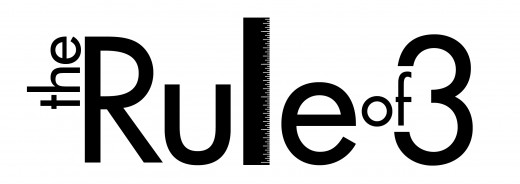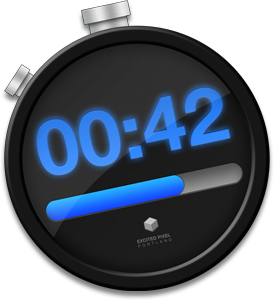5 Time Management Hacks That Cure Paralysis by Analysis

“Know the true value of time; snatch, seize, and enjoy every moment of it. No idleness, no laziness, and no procrastination: never put off till tomorrow what you can do today.” – Philip Stanhope
Words of wisdom from a man who never endured the temptation of playing Angry Birds or Candy Crush or had the luxury of the pause button, unlike Stanhope – we are inundated with opportunities to lose sight of the value of our time. The average American is distracted consistently throughout the day starting from the moment they wake up by some form of messaging. Including but not limited to, the following:
- Text
- Advertisements
- Social Media
- Television
In addition, to these external distractions we are regularly saddled with a long list of decisions to make that have grown in abundance with the dawn of the Information Age.
In The Paradox of Choice, Barry Schwartz takes aim at these distractions, along with a central tenet of modern western societies, which he titles “the official dogma.” The official dogma says that we aim to maximize freedom and to accomplish this we have to maximize choice. Throughout the text Schwartz see’s little value in “the official dogma.” Stating that the very options we value are making us less free – causing paralysis by analysis.
Researchers at Cornell found that people make an average of over 220 decisions about food alone each day.
Another side effect of an abundance of options is that once we sift through the options we find ourselves attached to highly sticky decisions that are designed to consume a lot of our time like the games I mentioned earlier or binge watching programming on Netflix or Hulu. Schwartz continues to mention two additional side effects:
- We end up less satisfied with the result of the choices we make because of the amount of effort required to come to a decision. It is natural that we will second guess our decision making and regret the fact that we didn’t make a different potentially more appropriate choice after examining a large amount of options.
- Escalation of expectations: By going through the process of selecting from a variety of options -- we tend to expect the end result to be better. It is easy to assume that after going through 100 options, one option should be perfect, which leads to high levels of disappointment when people find flaws within a selection. One can argue that everything was better back when everything was worse. Now a day we have such high expectations that the best result any decision can accomplish is to meet our expectations, which removes the opportunity for us to be wowed by our discoveries.
In short, the opportunity cost of sifting through more options diminishes the benefit received from the decision: the more time we spend making decisions, the less time we have to enjoy our choices.
Schwartz takes aim at these distractions, along with a central tenet of modern western societies, which he titles “the official dogma."
In an attempt to minimize the cost of my choices and in turn improve work / life balance. I have adopted the following techniques in order to manage my time and activities in a more efficient way.

1. The Rule of 3
The Rule of 3 will help you stay focused on the vital few things that matter. By identifying your three most important tasks and planning your day around these tasks. Repeat the same process heading into every week, month and year. The three outcomes for the year will guide your monthly goals as your monthly goals influence your weekly goals, while your daily goals are geared towards completing your over-arching goals in respect to your immediate needs.

2. The Pomodoro Technique
The Pomodoro technique is a basic technique which requires you to identify how much effort a task will need without distraction. Once an individual identifies how much time a task requires the next step is to complete the task against a timer. With the goal of creating a better work / life balance by adhering to laser-like focus while performing a given task, this in turn minimizes potential distraction and opens up time for additional activities.
Gallup polled U.S. workers say they waste about an hour at work each day.
We’ve identified how detrimental our technological time traps can be, but in a wired world we cannot completely separate ourselves from our gadgets. Fortunately, we have 1000’s of time management apps available designed to help us stay on mission. Here is a short list of tools I’ve curated to help you avoid the paradox of choice:
Which of these activities do you waste the most time on daily?

3. Evernote
Evernote is a free productivity tool that allows you to capture all of your ideas, thoughts and images in a variety of ways. The app supports cloud-based technology allowing you to sync your notes, voice notes and images across multiple devices.

4. Swipes To Do List
Swipes is a free to do list app that allows you to manage activities with the swipe of a finger. Opposed to other productivity apps which force you to shift through multiple views – swipes allows users to focus on the current day. If you need more time to complete a task you can push it back hours or days with the swipe of a finger. You also have an option to Tag your task too, enhancing your ability to search for a task in the future.
Swipes affords you the option of syncing your to do list with Evernote, in turn making a combination of Evernote + Swipes a winning formula.

5. Break Time App
Break Time offers its users an opportunity to set two separate timers:
- One timer is a countdown clock that you can set to any amount of time you allot to work on a project.
- The other one is a “break” timer that you can set which essentially locks your computer from use until the break time period has ended.
I recommend scheduling time for meals, rest and pleasurable activities that would generally become time traps without proper pomodoro time management.
Stanhope was right when he spoke of knowing the true value of time. We have reached a point in history when most people are performing daily task on auto pilot without taking the time to snatch, seize, and enjoy every moment. Individuals engulfed by the paradoxical nature of modern choice and all of the opportunity cost associated with decision making, struggling to identify an approach to time management that will benefit their future selves.
If you are anything like most of us -- I hope that a few of the aforementioned hacks will help you improve your ability to stay focused, make better decisions and avoid time traps.







